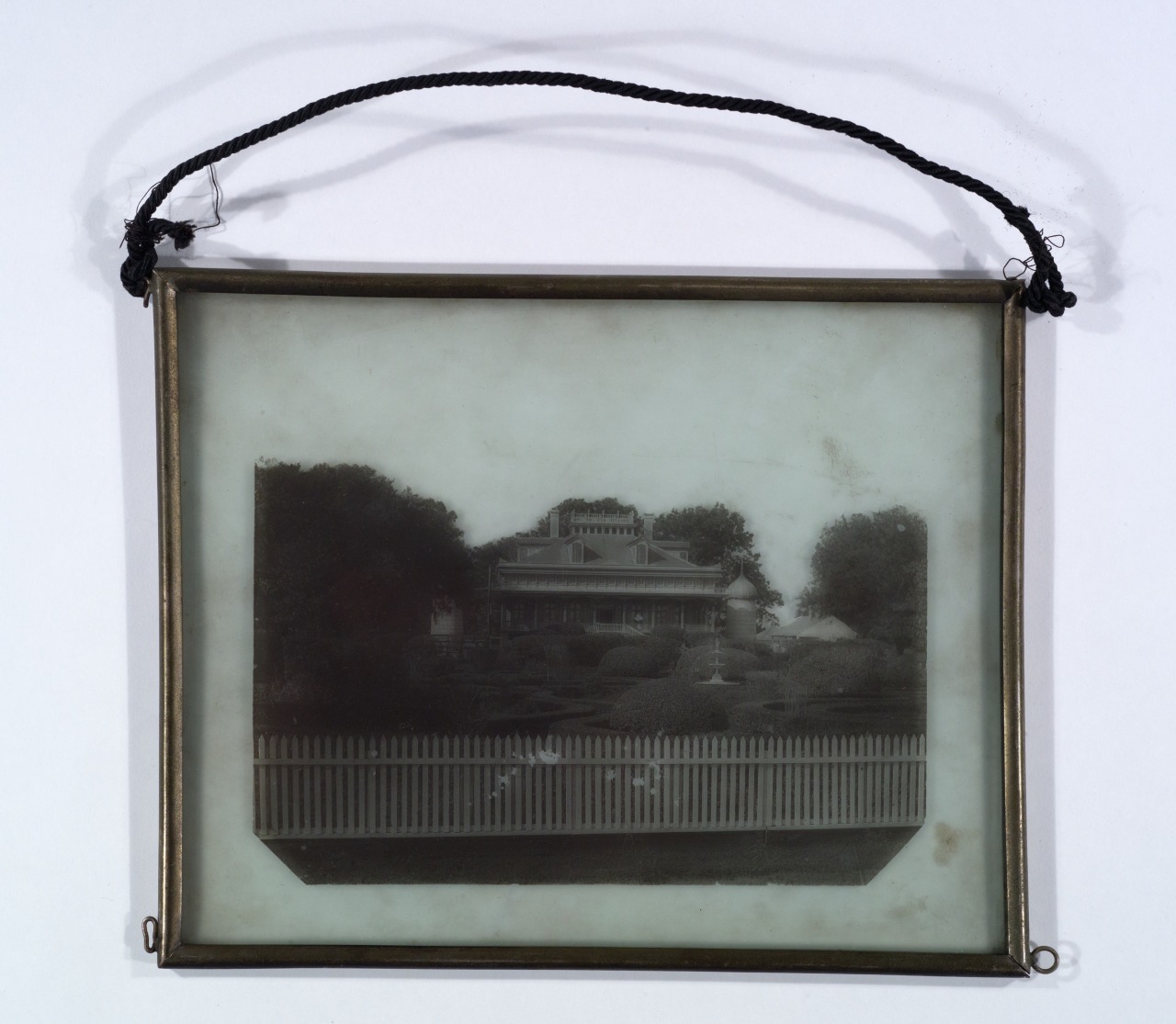Before the invention of photography, magic lantern slides were made from drawings or paintings that were mounted in a device, backlit by candles and mirrors, and projected on a screen or wall with a lens. Audiences were fascinated by the projections, which were often animated and accompanied by music. The magic lanterns were also used for scientific purposes.
Photography was a natural fit for the magic lantern technology. Lantern slides were made first with albumen (ca. 1850), then collodion (ca. 1850–1860), and finally gelatin (ca. 1870) on glass plates. Their standard size is typically 4 by 3.25 inches. Two methods or techniques were possible: using a plate that would produce a direct positive, or using a negative as an intermediate step to create a positive.
In the first method, a plate capable of producing a direct-positive image would be placed in a camera and, when exposed and processed, produced a single unique image. When using a negative to make a positive, two options were available. The first was to use a camera loaded with a negative to photograph another negative lit from behind. When developed, the negative of the negative would be a positive. The second way was to place a processed negative directly against an unprocessed one (contact printing) and expose both to light, creating a positive. Collodion and gelatin positives differed from their negative counterparts (see ambrotype) in length of exposure time and processing chemistry.

Mayor Joseph Shakspeare
glass positive; between 1888 and 1892
by an unknown photographer
The Historic New Orleans Collection, 1974.34

St. Roch’s cemetery and chapel
glass positive, lantern slide; ca. 1890
by an unknown photographer
The Historic New Orleans Collection, gift of Samuel Wilson Jr., 1981.328.56

Men in front of cabin
glass positive, lantern slide; ca. 1890
by an unknown photographer
The Historic New Orleans Collection, gift of Samuel Wilson Jr., 1981.328.62

I Am Longing for Tomorrow When I Think of Yesterday
glass positive with hand coloring, lantern slide; ca. 1911
by Crescent City Film Exchange
The Historic New Orleans Collection, 1991.56.2

San Francisco plantation
glass positive; ca. 1891
by an unknown photographer
The Historic New Orleans Collection, gift of Lydia N. Bougère, 1980.227
